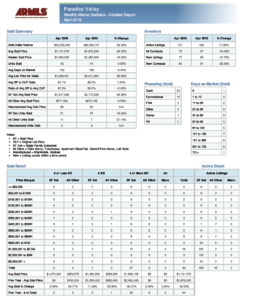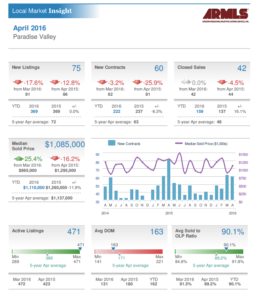 By Joe Szabo, Scottsdale Real Estate Team
By Joe Szabo, Scottsdale Real Estate Team
My Favorite Tips for Drought-Tolerant Landscaping By Joe Szabo, Scottsdale Real Estate Team
 By Joe Szabo, Scottsdale Real Estate Team
By Joe Szabo, Scottsdale Real Estate Team
Scottsdale Real Estate and Arizona Luxury Homes brought to you by the Scottsdale Real Estate Team
Search Scottsdale real estate and Paradise Valley real estate, MLS homes and condos for sale. Find the latest market data to help with your property search. Specializing in luxury homes, golf properties, condos and more.
June 6, 2016 Joe Szabo
 By Joe Szabo, Scottsdale Real Estate Team
By Joe Szabo, Scottsdale Real Estate Team
June 3, 2016 Joe Szabo
 By Joe Szabo, Scottsdale Real Estate Team
Ever bought something special and later realized you didn’t need it or like it after all? Usually, returning it is as simple as boxing it back up, locating the receipt, and taking it back to the store for a full refund.
But unlike store merchandise or even a car, you can’t return a home with a receipt, which makes the decision to buy even more stressful. You also don’t get a chance to “try before you buy” the home. You need to do as much homework ahead of time as possible, because in real estate “All Sales are Final.”
In a busier real estate market, with competitive bidding and limited inventory, you may feel compelled to go the extra mile to “win” a home. And then, it’s entirely possible that, within hours or days of getting the deal, you cool off and second guess yourself about any part of the home or the transaction. You decide you want to pull out of the contract.
By Joe Szabo, Scottsdale Real Estate Team
Ever bought something special and later realized you didn’t need it or like it after all? Usually, returning it is as simple as boxing it back up, locating the receipt, and taking it back to the store for a full refund.
But unlike store merchandise or even a car, you can’t return a home with a receipt, which makes the decision to buy even more stressful. You also don’t get a chance to “try before you buy” the home. You need to do as much homework ahead of time as possible, because in real estate “All Sales are Final.”
In a busier real estate market, with competitive bidding and limited inventory, you may feel compelled to go the extra mile to “win” a home. And then, it’s entirely possible that, within hours or days of getting the deal, you cool off and second guess yourself about any part of the home or the transaction. You decide you want to pull out of the contract.
June 1, 2016 Joe Szabo

May 31, 2016 Joe Szabo
 By Joe Szabo, Scottsdale Real Estate Team
Summer is our favorite time of the year to work with clients. Whether we’re curating an outdoor kitchen or styling a beautiful new deck, something about the warm weather makes us want to blur the lines between the indoors and outdoors with thoughtful design and fashion-forward functionality.
Here are some of our favorite ways to create an inspirational outdoor space this season.
By Joe Szabo, Scottsdale Real Estate Team
Summer is our favorite time of the year to work with clients. Whether we’re curating an outdoor kitchen or styling a beautiful new deck, something about the warm weather makes us want to blur the lines between the indoors and outdoors with thoughtful design and fashion-forward functionality.
Here are some of our favorite ways to create an inspirational outdoor space this season.
May 27, 2016 Joe Szabo
 By Joe Szabo, Scottsdale Real Estate Team
Searching for a home and engaging with a real estate agent today is not the same as it was a generation ago. The space (both physical and virtual) between the buyer and the real estate agent was much larger, and coming together was slower and more methodical.
If a buyer saw a For Sale sign or an ad in the paper, they might call the real estate agency’s office, get some information, and move on. Or they could walk into an open house solo. They could be rather anonymous.
But today’s home buyers live online. They can click, text or email with agents, and seriously engage within hours. But does that mean they are active and serious buyers ready to transact? Not necessarily.
By Joe Szabo, Scottsdale Real Estate Team
Searching for a home and engaging with a real estate agent today is not the same as it was a generation ago. The space (both physical and virtual) between the buyer and the real estate agent was much larger, and coming together was slower and more methodical.
If a buyer saw a For Sale sign or an ad in the paper, they might call the real estate agency’s office, get some information, and move on. Or they could walk into an open house solo. They could be rather anonymous.
But today’s home buyers live online. They can click, text or email with agents, and seriously engage within hours. But does that mean they are active and serious buyers ready to transact? Not necessarily.
May 24, 2016 Joe Szabo
 By Joe Szabo, Scottsdale Real Estate Team
If you’re self-employed, you must meet different requirements than a salaried person to qualify for a mortgage. The rules about how that works were updated in recent months to take an even closer look at your business income, so let’s review the rules for self-employed people borrowing for the first time, and for those who will be impacted by new rules next time they get a loan.
By Joe Szabo, Scottsdale Real Estate Team
If you’re self-employed, you must meet different requirements than a salaried person to qualify for a mortgage. The rules about how that works were updated in recent months to take an even closer look at your business income, so let’s review the rules for self-employed people borrowing for the first time, and for those who will be impacted by new rules next time they get a loan.
May 18, 2016 Joe Szabo
May 17, 2016 Joe Szabo
 By Joe Szabo, Scottsdale Real Estate Team
There are no one-size-fits-all answers when it comes to houseplants, and a plant tag can only tell you so much. Each species is unique, hailing from climates ranging from dry deserts to Mediterranean landscapes to tropical rainforests, and even two plants of the same species can have totally different needs depending on a number of factors. Fertilizing depends on the type of plant and the label instructions, while pruning times and methods rely on a plant’s blooming time and growth pattern.
Grow a lush and flourishing indoor garden filled with a variety of plants by following this three-step program. Start with a good reference, and inspect for problems every time you water. Finally, fill out a maintenance checklist for each plant in your collection to provide the most personalized and accurate care possible.
By Joe Szabo, Scottsdale Real Estate Team
There are no one-size-fits-all answers when it comes to houseplants, and a plant tag can only tell you so much. Each species is unique, hailing from climates ranging from dry deserts to Mediterranean landscapes to tropical rainforests, and even two plants of the same species can have totally different needs depending on a number of factors. Fertilizing depends on the type of plant and the label instructions, while pruning times and methods rely on a plant’s blooming time and growth pattern.
Grow a lush and flourishing indoor garden filled with a variety of plants by following this three-step program. Start with a good reference, and inspect for problems every time you water. Finally, fill out a maintenance checklist for each plant in your collection to provide the most personalized and accurate care possible.
May 13, 2016 Joe Szabo
 By Joe Szabo, Scottsdale Real Estate Team
In many real estate markets around the country, inventory is low and sellers are in the driver’s seat again.
In some cases, homes are selling for more than asking price. After years of a sluggish buyers’ market, many real estate agents are trying to get would-be sellers to list their homes now.
It seems like a great time to sell. But how can you know for sure if it’s a great time for you to sell?
If you experience buyer’s remorse, you can usually get out of a contract through contingencies or other out clauses. If you start to feel seller’s remorse, you don’t have that luxury. So you must be certain you’re ready to sell before you sign the contract —or, better yet, before you list the property.
To avoid seller’s remorse, and to make the sales process go as smoothly as possible, keep these strategies in mind.
By Joe Szabo, Scottsdale Real Estate Team
In many real estate markets around the country, inventory is low and sellers are in the driver’s seat again.
In some cases, homes are selling for more than asking price. After years of a sluggish buyers’ market, many real estate agents are trying to get would-be sellers to list their homes now.
It seems like a great time to sell. But how can you know for sure if it’s a great time for you to sell?
If you experience buyer’s remorse, you can usually get out of a contract through contingencies or other out clauses. If you start to feel seller’s remorse, you don’t have that luxury. So you must be certain you’re ready to sell before you sign the contract —or, better yet, before you list the property.
To avoid seller’s remorse, and to make the sales process go as smoothly as possible, keep these strategies in mind.
May 11, 2016 Joe Szabo

 Considering a purchasing or selling a property in Paradise Valley? Call Joe and Linda Szabo – The Real Estate Experts!
We hope that you enjoy reading and analyzing the Paradise Valley Luxury Home Report and should you have any questions or comments, please feel free to Contact Joe Szabo at 480.688.2020 or email him directly at [email protected] or [email protected]. You can also visit https://www.AZLuxuryHomes.com or https://scottsdalerealestateteam.com to find out more about Paradise Valley Homes for Sale and Estates for Sale in Paradise Valley and to search the Paradise Valley MLS for Scottsdale Home Listings.
Please note that this Paradise Valley Real Estate Blog is for informational purposes and not intended to take the place of a licensed Paradise Valley Real Estate Agent. The Szabo Group offers first class real estate services to clients in the Scottsdale and Paradise Valley Greater Phoenix Metropolitan Area in the buying and selling of Luxury homes in Arizona. Award winning Realtors and Re/MAX top producers and best real estate agent for Luxury Homes in Paradise Valley, The Szabo group delivers experience, knowledge, dedication and proven results.
Considering a purchasing or selling a property in Paradise Valley? Call Joe and Linda Szabo – The Real Estate Experts!
We hope that you enjoy reading and analyzing the Paradise Valley Luxury Home Report and should you have any questions or comments, please feel free to Contact Joe Szabo at 480.688.2020 or email him directly at [email protected] or [email protected]. You can also visit https://www.AZLuxuryHomes.com or https://scottsdalerealestateteam.com to find out more about Paradise Valley Homes for Sale and Estates for Sale in Paradise Valley and to search the Paradise Valley MLS for Scottsdale Home Listings.
Please note that this Paradise Valley Real Estate Blog is for informational purposes and not intended to take the place of a licensed Paradise Valley Real Estate Agent. The Szabo Group offers first class real estate services to clients in the Scottsdale and Paradise Valley Greater Phoenix Metropolitan Area in the buying and selling of Luxury homes in Arizona. Award winning Realtors and Re/MAX top producers and best real estate agent for Luxury Homes in Paradise Valley, The Szabo group delivers experience, knowledge, dedication and proven results.
We would love to hear from you! Please fill out this form and we will get in touch with you shortly.



Mobile: 480-688-2020
Office: 480-889-8702
Fax: 480-355-9444
[email protected]
21000 N. Pima Rd
Suite 100
Scottsdale AZ, 85255
to save your favourite homes and more
Log in with emailDon't have an account? Sign up
Enter your email address and we will send you a link to change your password.
to save your favourite homes and more
Sign up with emailAlready have an account? Log in